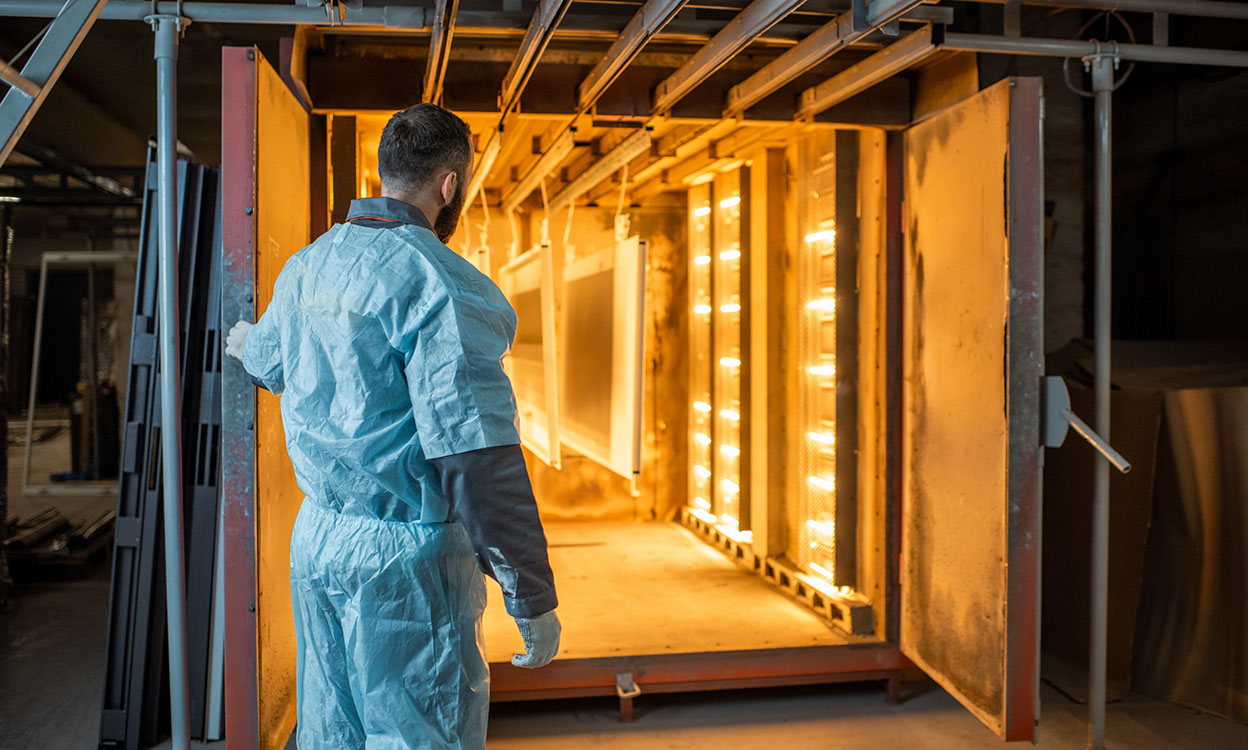

The final and perhaps most critical step of the application process for a Teflon™ Coating is the cure. Up until now, prepping the part and applying the coating follow similar, if not identical, practices as any other fluoropolymer. Unique properties of Teflon™ Coatings become compromised with a half-baked curing approach.
The Chemours Technical Data Sheet (TDS) outlines a recommended cure time and temperature for each Teflon™ coating based on the part temperature, allowing it to be a universal reference regardless of the metal mass, part size, geometry, or base material.
Below are the three most common curing mistakes we see made by coaters across the country and Canada.
The only thing that matters with curing a Teflon™ Coating is the temperature of the metal – NOT the air temperature. A proper cure requires an understanding of three elements:
The most common mistake is under-curing parts due to the metal not getting up to temperature and/or not having enough dwell time to properly cure.
Correct Cure Technique: Measure part temperature with a thermocouple. Without a thermocouple, there is no way of knowing the exact temperature of the part. The result can be either an under or over cure of the coating.
Using a laser thermometer is better than not measuring at all, but there are several significant issues with this approach to temperature control.
Correct Cure Technique: Use a thermocouple, one that does not require opening the oven to take a reading, to measure the temperature of the part.
Once a part has been cured at the recommended time and temperature, cooling the part down is critical to avoid an overcure. The secret here is to reduce the metal temperature below the melting point of the fluoropolymer as quickly as possible.
A common practice is to turn the oven off after the parts have been in the oven for the recommended time, crack the door open, and leave the parts in the oven.
Another common practice that is also incorrect is to run a long bake after hours and have the oven controller turn off after the cure is complete with the oven doors remaining closed until the next morning.
Both scenarios can lead to an overcured coating. If the parts were hooked up to a thermocouple, one would see that the temperature of the part decreases very slow, exposing the parts to elevated temperatures for an extended period of time.
Correct Cure Technique: Take the parts out of the oven and put them somewhere safe to cool. Turn on a fan to assist with the cooling. Hook parts up to a thermocouple to test the temperature.
The Teflon Coatings™ product line is a high-performance, high-quality solution to many aggressive problems. Do yourself and your customers a favor and evaluate processes and equipment to consistently deliver properly cured coated parts to customers.